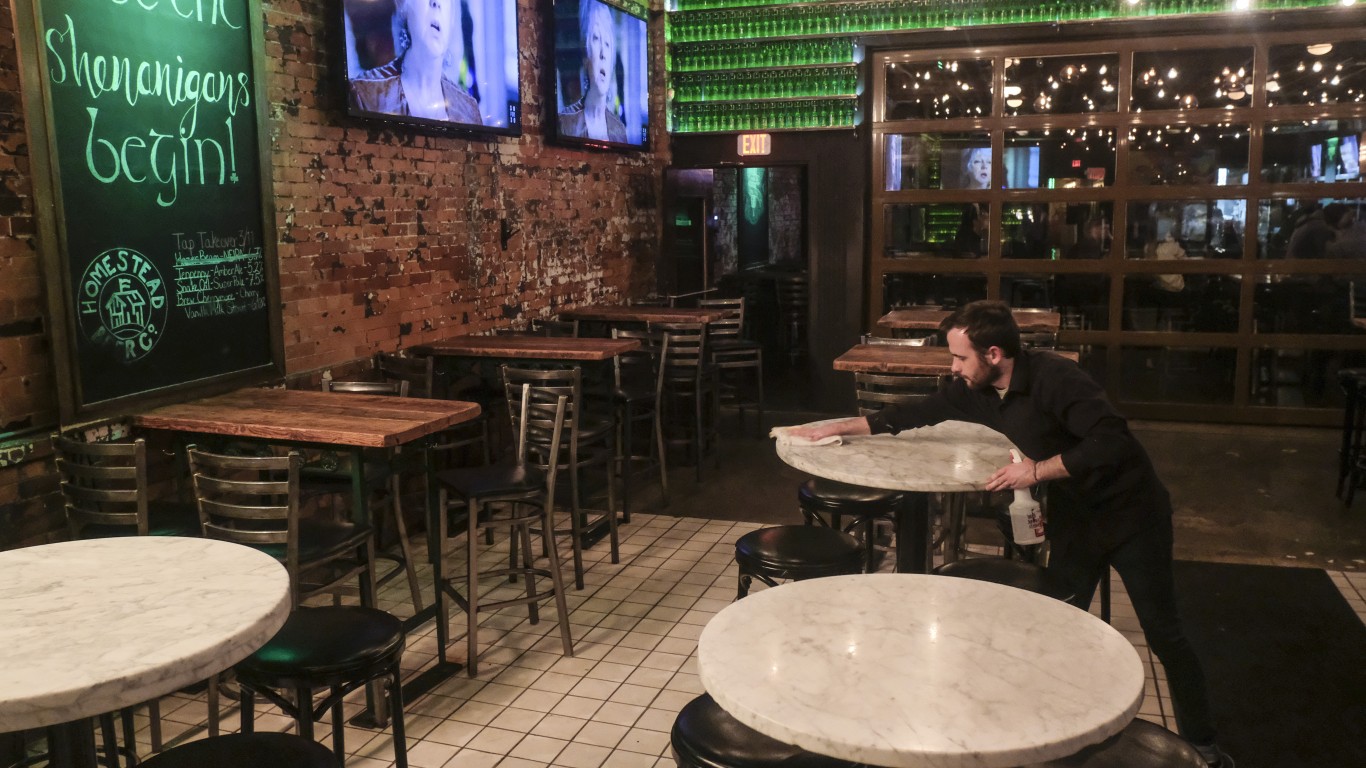Health and Healthcare
COVID-19: This Condition Helps Spread the Virus, According to Research

Published:

The rate of the spread of COVID-19 had slowed across America. Increases in daily fatal and confirmed cases are still about half what they were seven weeks ago. Nevertheless, 567,894 Americans have died, which is about 20% of the world’s total. Confirmed cases have reached 31,442,604, or about 23% of the global number. Hospitalizations, which were over 100,000 a day during the peak wave, dropped into the thousands.
However, the Centers for Disease Control and Prevention (CDC) and several media sources show that cases have started to rise again in well over half the states in America, currently led by Michigan.
Much of the country has “opened up,” which has caused worries that there will be a fourth wave of the disease. Just two weeks ago, the nation’s newspapers were filled with reports of large college parties in Florida with hundreds of people in close proximity without masks. More people flew over the Easter weekend than any other weekend since the start of the pandemic. This kind of activity has led to public health officials predicting that fourth wave.
Michigan recently asked the federal government for additional vaccines because of the rising spread of COVID-19 there. The request was denied, but the head of the CDC suggested the state be shut down to resolve the problem.
Variants of the disease are among the dangers epidemiologist and public health officials worry about. At least one, first identified in the United Kingdom, now accounts for most new U.S. cases. This variant also could be more deadly. The CDC currently tracks three variants for the public on its website. It has 20,915 cases of the B.1.1.7 variant reported across all 50 states. There are 453 cases reported of the B.1.351 variant across 36 states, and 497 reported cases of the P.1 variant across 31 states. Several other variants have emerged that the CDC does not report on to the public. This is the state with the most variants.
The pace of the spread of the disease remains in part a race between vaccinations and the rising number of potentially dangerous variants. So far, 36% of the adult population has received at least one dose of vaccine and 22% are fully vaccinated. While the Pfizer and Moderna vaccines require two shots, the one from Johnson & Johnson requires just a single dose. According to The New York Times, 237,796,305 doses have been delivered in the United States and 189,692,045 of them (80%) have been administered.
Experts are constantly on the lookout for ways COVID-19 can be spread and how people can be protected. The primary means of protection for those not vaccinated are masks, hand washing and staying out of crowded places. New research shows the potential danger of being indoors. Many companies and other organizations have put special filters into their HVAC systems, but poor ventilation remains a challenge. According to new research published in Building and Environment, reported on by WebMD:
Leading health authorities have recognized the importance of airborne transmission in special settings since October 2020. However, the effective minimum ventilation rate for avoiding airborne transmission remains unknown.
In specific, the research looked at people who ate at the same restaurant in Guangzhou, China, on Chinese New Year’s Eve on Jan. 24, 2020. Ten people from three families became infected. People who became infected did not sit next to one another. Another 68 people in the location who either work in the restaurant or sat at a total of 15 tables became infected.
The problem, it turns out, was the ventilation system that did not circulate air quickly enough. It was, according to the study, “below recommended standards.” The conclusion of the research was that a sufficiently high ventilation flow rate reduces the contribution of airborne transmission to a very low level, whereas a low ventilation flow rate leads to a relatively high contribution of aerosols to transmission.
Click here to see the deadliest county in America due to COVID-19.
Start by taking a quick retirement quiz from SmartAsset that will match you with up to 3 financial advisors that serve your area and beyond in 5 minutes, or less.
Each advisor has been vetted by SmartAsset and is held to a fiduciary standard to act in your best interests.
Here’s how it works:
1. Answer SmartAsset advisor match quiz
2. Review your pre-screened matches at your leisure. Check out the advisors’ profiles.
3. Speak with advisors at no cost to you. Have an introductory call on the phone or introduction in person and choose whom to work with in the future
Thank you for reading! Have some feedback for us?
Contact the 24/7 Wall St. editorial team.